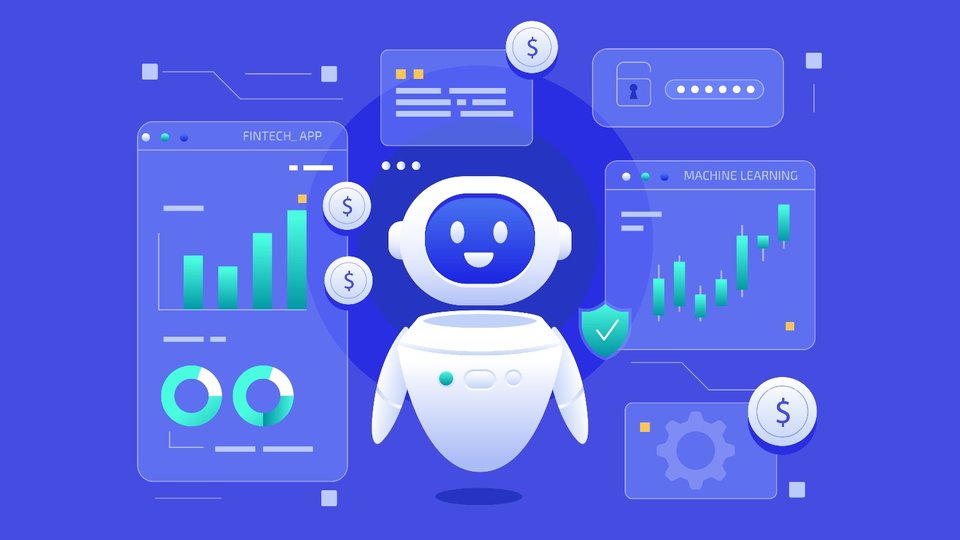Innovation
Banking AI: 3 tools to watch
Here are three banking AI tools to watch in the coming years.

August 16, 2024 by Bradley Cooper — Editor, ATM Marketplace & Food Truck Operator
AI has garnered a lot of attention for its role in generative art, writing and more. Banking AI on the other hand has not gotten as much attention, for a variety of reasons.
For one, financial institutions are by nature more conservative and less likely to embrace the newest technologies, particularly due to uncertain regulatory frameworks. For another, current AI tools do have limitations, and many banks are concerned about exposing sensitive customer data to untested AI solutions.
Despite this, banking AI is beginning to have an impact both on the industry and in turn the banking experience. Here are three banking AI tools to watch in the coming years.
Chatbots
Chatbots are a fairly common solution in banks today, ranging from Bank of America's Erica, May from HSBC, Ally Assist from Ally Bank and more, according to a blog post from netomi.
These chatbots typically provide a variety of information for customers ranging from answering questions about products, facilitating transfers and more.
In the case of Erica from Bank of America, it uses natural language processing for tasks like viewing bills, providing personalized financial insights on charges, and delivering customized advice to clients.
Bank chatbots can also match up customers with a dedicated banker that can provide them with advice. BAC Community Bank, based in California uses an app called Smart Alac which can both answer questions and set up a banker as a point of contact for customers, according to a report by CNBC.
AI chatbots can also escalate issues to bank employees as needed. In the future, expect to see chatbots start to deliver more advanced services utilizing AI including ChatGPT protocols.
Although currently Bank of America's Erica does not use generative AI, instead relying on existing data from customers, according to a report from Emarketer, some banks are considering integrating it in the future.
That being said, due to the sensitive nature of banking data and the likelihood of ChatGPT delivering wrong information, there will be more oversight with these tools in the future as bugs are worked out.
Branch management
Banking AI won't just transform digital platforms, it will also make waves in retail branches in many different ways.
For example, JPMorgan Chase is exploring utilizing AI to boost employee productivity at branches, according to a report by CNBC.
AI can also help improve security at bank branches by integrating with cameras to detect dangerous behaviors, weapons and quickly alert authorities if someone either tries to rob the bank or steal from an ATM.
Mark Aldred, head of sales of Auriga said in a blog on ATM Marketplace that AI can improve ATMs as well.
Concerning lifecycle management of physical devices, for example, AI can identify use patterns of an ATM and predict when those devices will need maintenance.
"Concerning lifecycle management of physical devices, for example, AI can identify use patterns of an ATM, and predict when those devices will need maintenance," he said. "By monitoring the cash supply in an ATM, banks can predict trends for withdrawals and deposits over specific times. These insights help ensure that ATMs have the necessary amount of cash in their machine and improves the cash replenishment process."
Banks can also utilize AI to detect fraud, both in the branch and on digital platforms.
Data processing
While regulatory concerns are front and center for generative AI, in the meantime banks can truly benefit by using AI to handle Big Data.
David Becker, CEO of First Internet Bank, the first online only bank founded in 1999, believes thatdata processing should be the first step for banks looking to get into AI.
"For years, bankers have been forced to pore over endless spreadsheets and toggle with equations to track the data most essential to their needs. Sooner than you may think, AI tools will help crunch those numbers in mere seconds, allowing bankers to leverage their data more efficiently in complicated processes such as loan underwriting, personal finance recommendations or regulatory reporting," he said.
As an example of this, banks could use AI to automate lending processes to rapidly speed up approval times for customers. This will have the double impact of boosting operational efficiency and the bank customer experience.
Concluding thoughts
The future of AI remains uncertain in many ways, as customers struggle on whether to fully adopt it, fight against it or take a position in between. There is also of course the concern over job losses, both in the financial industry and in other industries.
That being said, banking AI will not be a replacement for human interaction. Instead, it will allow bankers to deliver better insights for customers and improve the overall experience. The goal is not to replace the human touch but rather make it more impactful.
About Bradley Cooper
Included In This Story
Auriga
Auriga is a top international software solutions company, specialized in end-to-end systems that integrate the various delivery channels used in retail and internet banking.














